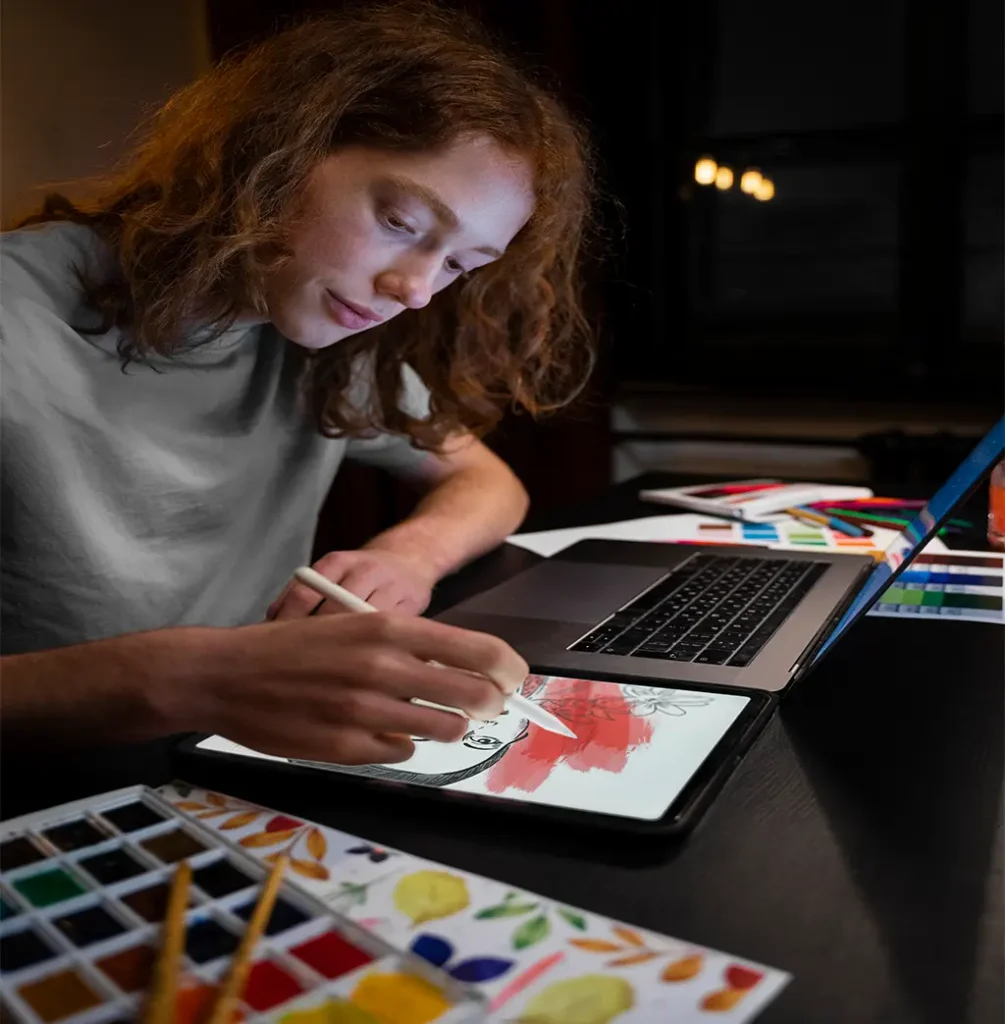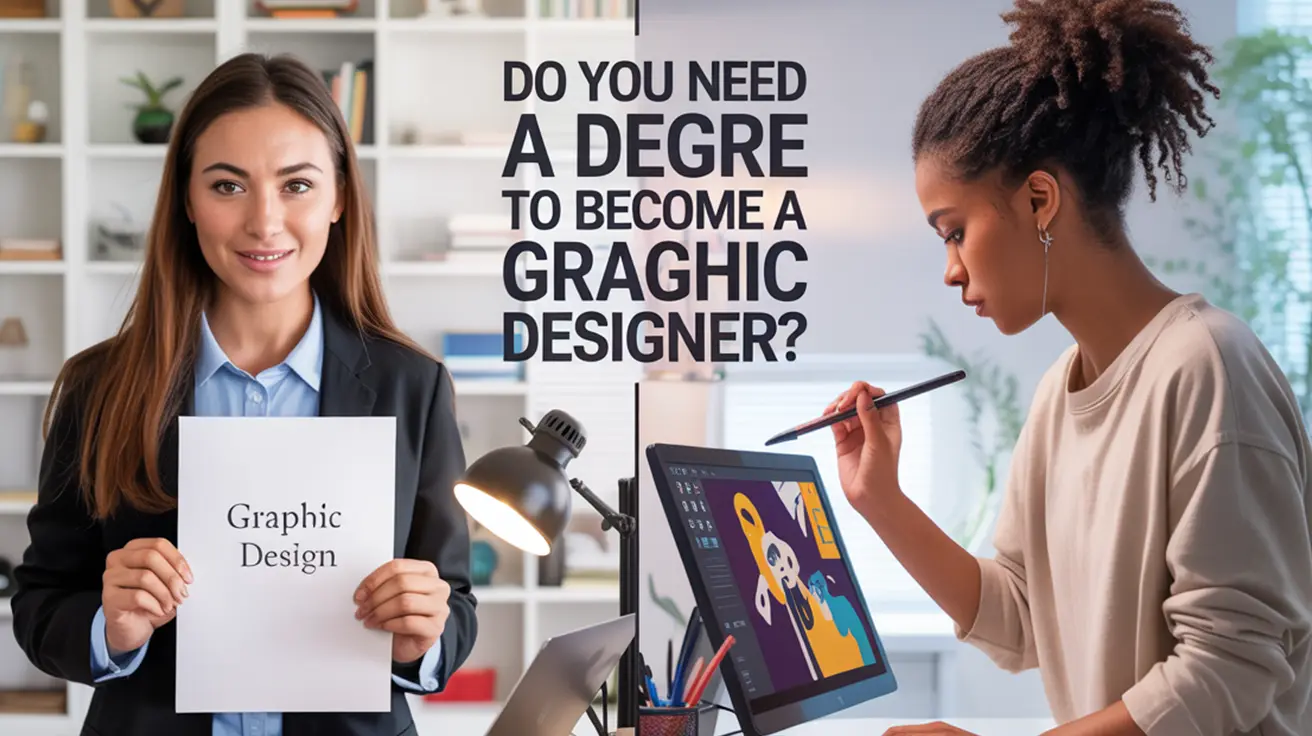Graphic design is one of the most exciting, fast-growing, and accessible creative careers today. In 2025, design is everywhere—from websites and apps to advertising, branding, gaming, and even virtual reality. With the ever-expanding need for visual communication, the demand for skilled graphic designers is stronger than ever.
Many aspiring creatives wonder: Is a degree required for graphic design in today’s industry? The simple answer is no—but there’s more to it. In 2025, employers and clients focus more on your portfolio, real-world skills, and design thinking than your academic background. Whether you’re self-taught, certified online, or a degree holder, what truly matters is how well you can solve visual problems and communicate ideas through design.
But do you need a degree to be a graphic designer in 2025?
In this comprehensive guide, we’ll explore:
Whether a degree is required for graphic design
When a degree might help
Why it’s no longer essential
How to become a graphic designer without a degree
Real-world success stories
The tools and skills you need to thrive in the industry
What Really Matters Instead of a Degree
You can absolutely launch and grow a design career without a degree, as long as you focus on:
✅ A Strong Portfolio
Showcase your work, even if it’s personal projects, redesign challenges, or nonprofit work. Your portfolio speaks louder than any certificate.
✅ Real Design Skills
Learn the tools:
Adobe Photoshop, Illustrator
Figma & Canva
Typography, color theory, layout principles
✅ Practical Experience
Take freelance gigs, intern, volunteer, or participate in online design contests. Every real-world project adds to your credibility.
✅ Self-Motivation & Consistency
Graphic design is not a one-time course—it’s an evolving skill. Stay updated, practice regularly, and keep creating.
Advantages of Having a Graphic Design Degree
While you don’t absolutely need a degree to be a graphic designer, formal education still has its benefits.

1. Structured Learning Environment
If you’re someone who thrives in classrooms and needs external structure, a university program offers a well-rounded curriculum that builds foundational skills in a step-by-step format.
2. Mentorship from Academic Professionals
Professors and mentors can provide valuable critiques and career guidance—something harder to get when you’re learning solo.
3. In-Depth Understanding of Art & Design Principles
Formal education exposes you to:
- Art history
- Typography
- Color theory
- Branding principles
- UX/UI design
These fundamentals help you design more thoughtfully and professionally.
4. Access to Campus Resources
University campuses often offer high-end labs, printing equipment, creative spaces, and libraries that help you experiment and push your boundaries.
5. Networking & Internships
College can connect you with internships, alumni, and recruiters giving you a leg up in building your career network.
Why You Don’t Need a Degree to Become a Graphic Designer in 2025
Let’s be clear: Is a degree required for graphic design today? No. In fact, many successful designers are completely self-taught.
Online Graphic Design Courses
Platforms like Coursera, Skillshare, Udemy, and Domestika offer complete design curriculums often taught by industry professionals. Many courses include projects and certifications.
Stay Current with Trends & AI
Design evolves fast. Learn AI tools like Adobe Firefly, Canva AI, or Midjourney to stay ahead. Many clients now expect designers to integrate AI and automation into their workflow.
Master the Tools
You don’t need to be a software engineer, but you do need to be fluent in design tools. More on that below.
Stay Current with Trends & AI
Design evolves fast. Learn AI tools like Adobe Firefly, Canva AI, or Midjourney to stay ahead. Many clients now expect designers to integrate AI and automation into their workflow.
Alternative Paths to Learn Graphic Design
Without a Degree
Here’s a breakdown of how to become a graphic designer without a degree:
Online Graphic Design Courses
Platforms: Coursera, Skillshare, Udemy, Domestika
Benefits: Flexible, affordable, project-based learning
Certificates available from universities or instructors
Certifications
While not mandatory, these add credibility:
Adobe Certified Professional
Google UX Design Certificate
Canva Creator Program
IBM Design Thinking Certificate
Bootcamps
Short-term, intensive training
Real feedback from experts
Often job or portfolio-focused
Some even offer job placement help
Internships & Freelance Projects
Real-world experience beats textbook knowledge
Even small gigs help you build confidence, client communication, and a real portfolio
Real Success Story : No Degree, Big Wins
Learning tools like Illustrator, Figma, and Canva Pro
Completing real-world design projects
Building her portfolio on Behance
Reaching out to small businesses on Instagram for freelance Within 90 days
A strong social media presence
A growing portfolio
A part-time remote job as a junior designer
No degree. Just skills and consistency.

Tools You Should Learn
Adobe Photoshop
Best for photo editing, visual effects, poster creation, and social media graphics
Adobe Illustrator
Perfect for creating logos, vector illustrations, branding elements, and icons
Figma
Widely used for UI/UX design, wireframing, prototyping, and team collaboration in real-time
Canva Pro
Great for fast, polished social media designs, branding kits, and client-ready marketing materials
Adobe Firefly
AI-powered tool for generating images, textures, and creative content using text prompts
Midjourney
AI art generation tool ideal for concept design, visual ideation, mood boards, and artistic inspiration
🌐 Is a Degree Required for Graphic Design Careers Abroad?
Not usually. Especially for remote roles or international freelance work, your skills, portfolio, and communication matter far more than academic background.
In fact, many companies worldwide follow skills-based hiring, where practical ability trumps degrees.
📊 Industry Insight: Degree vs. Skill
Recent hiring trends show:
70%+ of employers now prioritize portfolios over degrees
Many successful designers are career changers or started with no formal design education
Even big design agencies are removing degree requirements from job listings
The future of hiring in graphic design is skills-first, not degree-first.
💼 What Employers and Clients Actually Look For
Can you solve design problems creatively?
Are you fast and reliable with deadlines?
Do you know how to use key tools effectively?
Does your portfolio show variety and originality?
If the answer is yes, your academic history won’t matter.
🎯 Final Answer: Do You Need a Degree to Be a Graphic Designer?
✅ Get a Degree If You:
Prefer structured, academic learning
Plan to apply to top firms that prioritize credentials
Can afford a full-time 3–4 year program
Want access to campus resources and internships
❌ Skip the Degree If You:
Prefer learning through doing
Want to freelance, work remotely, or build your own brand
Are looking for a faster and more affordable path into design
Are ready to build your skills and portfolio through online education
In short, a graphic design degree is helpful—but not necessary. The design world values your skills, portfolio, and creativity far more than your diploma.
Enroll in a part-time design course
Create mock designs for real brands
Upload your work to Behance or Dribbble
Start taking freelance gigs on Fiverr or Upwork
Build your online portfolio
Get feedback from design communities
Learn motion graphics or UI/UX design for future growth
👋 Final Thoughts
You don’t need a degree to become a graphic designer. But you do need the right skills, a compelling portfolio, and the willingness to learn continuously. Whether you’re just starting out or switching careers, graphic design is one of the few high-demand fields where your work matters more than your certificate.
Want to become a graphic designer without a degree?
👉 Our 3 – 6 month online graphic design course built for beginners.

✅ Here's what you'll get:
- Master the tools: Photoshop, Illustrator, Figma, Canva Pro, and Firefly
- Real-world projects to showcase in your portfolio
- Flexible, beginner-friendly learning no prior experience needed
- Certification upon completion to boost your resume
- Career support for freelance, full-time, or remote jobs
🚀 Join hundreds of students who’ve launched their creative careers without a degree.
Want Professional Feedback?
These projects are ideal for personal growth, but they become truly powerful with expert critique, mentorship, and structured learning. That’s where a professional course makes the difference.
✅ Inside our
or
you’ll:
Get feedback from real designers
Build industry-level projects
Learn tools like Photoshop, Illustrator, Figma, Firefly, and more
Learn how to package your projects into a real portfolio
Turn your creativity into a career that’s future-proof.
FAQ
No, a degree is not required for graphic design jobs in most cases. Employers are more interested in your portfolio, design skills, and creativity than your academic background.
Because traditional education used to be the only path. But now, with accessible online learning and hands-on projects, graphic design without a degree is more achievable than ever.
Yes, you can. Thousands of designers are thriving in their careers without formal education. The real answer to “Is a degree required for graphic design?” is: Not if you’re willing to learn, build a portfolio, and stay updated.
Build a professional portfolio, take certified online courses, and work on real projects—freelance, internships, or passion work. These are often more effective than answering “Yes” to “Is a degree required for graphic design?”
No. In freelance, your work speaks louder than any degree. Clients want results, creative ideas, and reliability—not a diploma.
Show your portfolio first. Then, confidently explain your learning path, whether through self-study, courses, or hands-on work. Back it up with real results.
Less frequently now, especially in startups, agencies, and remote jobs. Even when mentioned, employers will often accept equivalent experience.
Some larger companies may list it as a preference, but even they are moving toward a skills-first hiring approach. A strong portfolio often overrides degree status.
Most entry-level graphic design jobs don’t require a degree. Employers look for creative thinking, technical skills, and a willingness to learn on the job.
Key skills include:
Typography & layout
Color theory
Adobe tools (Photoshop, Illustrator)
Figma & Canva
Branding and visual storytelling
Yes! Many graphic designers start with tutorials, YouTube, and design challenges. The field is very self-taught friendly if you're motivated and practice regularly.
Definitely. Many internships and freelance clients look at your sample work rather than your qualifications. Passion projects and mock designs help here.
Not usually. For remote and global roles, clients and employers prioritize skills, experience, and communication—not your academic background.
No, especially if you continue learning, build your network, and adapt to new tools. Your reputation and portfolio can open doors without formal education.
Yes. Roles like social media designer, branding freelancer, motion graphic artist, and UI designer often don’t require formal degrees—just great work.
Focus on:
Creating a polished portfolio website
Building real-world projects (freelance, contests, volunteer work)
Learning in-demand tools (Figma, Adobe, AI tools)
Networking with other creatives online and offline









